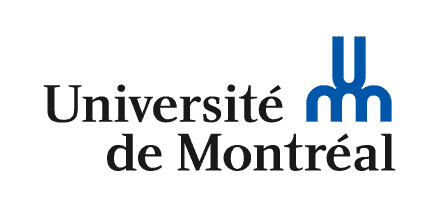

L’humanisme
Revenir aux humanae litterae
- humanae vs. divinae
- place de “l’homme”
ut patiamini me, dicentem pro summo poeta atque homine eruditissimo hoc concursu hominum litteratissimorum, hac humanitate vestra, […] loqui paulo liberius de studiis humanitatis ac litterarum. Cicéron, Pro Archia
La philologie
- l’intention de l’auteur
- la vérité du texte
- professionnalisation: érudit (chercheur), éditeur, auteur etc.
Un changement de matière
L’espace numérique
Qu'est-ce que le numérique?
Plusieurs questions… par exemple :
- numérique et analogique
- Signification culturelle
- Internet et web?
- en ligne ou pas seulement ?
- Crise institutionnelle
- numérique et politique
- Moderne, contemporain... numérique
Mais à l'aspect technique s'ajoute un aspect culturel
- Discours (hi-fi, immatérialité etc.)
- Pratiques
- Changement de perception
Immatériel?
- La matérialité de l'infrastructure
- Les enjeux politiques
Caractéristiques?
- Discrétisation - et modélisation
- Multiplicité
- Calculabilité - algorithmicité
- Matérialité: l'espace numérique
Implication politiques
- Modélisation et naturalisation
- Algorithmes et production du sens - Page Rank
- Données pures?
- Machine et compréhension
L’écriture
- inscription matérielle
- trace?
- signe?
- matériau
Internet et le web
Principes
- Internet: un réseau physique et des protocoles
- Le web (1.0, 2.0, 3.0)
- Le format html
- Serveurs, bases de données et CMS
D’autres textes
- Multiples
- Instables
Du modèle:
- The editor chooses what to edit.
- The editor chooses who to work with.
- The editor chooses how to edit.
- The editor gathers the materials together.
- The editor, and partners, create the edition.
- The editor needs considerable institutional support.
Robinson, Peter. « Editing Without Walls ». Literature Compass 7, nᵒ 2 (2010): 57‑61..
Au modèle:
- Libraries, scholarly agencies, put high-quality digital images on the web.
- Individual scholars, research students, independent experts, make transcripts, descriptions, analyses, based on and linked to the images.
- Other scholars, students, etc., collate the transcripts and publish them online, linking them to the transcripts and images.
- Other scholars analyse the collations and write textual commentaries ⁄ prepare ‘reading texts’ with apparatus.
- Other scholars add other commentaries, indices, analyses. All these can work independently.
Robinson, Peter. « Editing Without Walls ». Literature Compass 7, nᵒ 2 (2010): 57‑61..
Une autre philologie
- Du texte au document
- De Lachmann à Bédier - jusqu’à la New Philology
Pierazzo, Elena. « Il Testo è Morto: Lunga Vita Ai Testi. Pluralismo Testuale e Edizioni Digitali». Prassi Ecdotiche Della Modernità Letteraria 0, nᵒ 3 (12 septembre 2018): 321‑44. .
L’humanité à l’ère numérique
Du texte à l’individu
Questionnements
- Professionnalisation et individus
- Se reposer la question: qu’est-ce que l’humain?
Être humain et machines
Digital humanities
Posthuman studies
My posthumanist account calls into question the givenness of the differential categories of human and nonhuman, examining the practices through which these differential boundaries are stabilized and destabilized. Barad, Karen. 2007. Meeting the Universe Halfway: Quantum Physics and the Entanglement of Matter and Meaning. Second Printing edition. Durham: Duke University Press Books.
Qui sommes-nous?
- Des dynamiques qui produisent un espace et ensuite:
- Des relations à partir desquelles émergent
- Des formats
- Des protocoles
- Des environnements
- Des algorithmes
- Des valeurs
- Des personnes
- Des communautés
- …